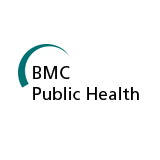
Background: Poor neonatal health is a major contributor to under-five mortality in developing countries. A major constraint to effective neonatal survival programme has been the lack of population level data in developing countries. This study investigated the consultation patterns of caregivers during neonatal fatal illness episodes in the rural Matlab sub-district of eastern Bangladesh. Methods: Neonatal deaths were identified through a population-based demographic surveillance system in Matlab ICDDR,B maternal and child health (MCH) project area and an adjoining government service area. Trained project staff administered a structured questionnaire on care seeking to mothers at home who had experienced a neonatal death. Univariate, bivariate and binary multivariate logistic regressions were performed to describe care seeking during the fatal illness episode. Results: Of the 365 deaths recorded during 2003 and 2004, 84% died in the early (0-7days) neonatal period, with the remaining deaths occurring over the subsequent 8 to 28 days. The first resort of care by parents was a qualified doctor or paramedic in 37% of cases, followed by traditional and unqualified health care providers in 25%, while 38% sought no care. Thus, almost two thirds (63%) of neonates who died received only traditional and unqualified care or no care at all during their final illness episode. About 22% sought care from more than one provider, including 6% from 3 or more providers. Such plurality in care seeking was more likely among male infants, in the late neonatal period, and in the MCH project area. Conclusions: The high proportion of neonatal deaths that had received traditional care or no medical care in a rural area of Bangladesh highlights the need to develop community awareness about prompt medical care seeking for neonatal illnesses and to improve access to effective health care. Integration of traditional care providers into mainstream health programs should also be considered.